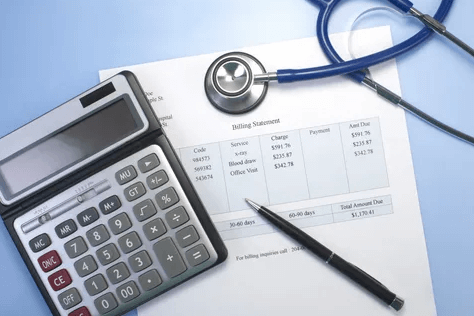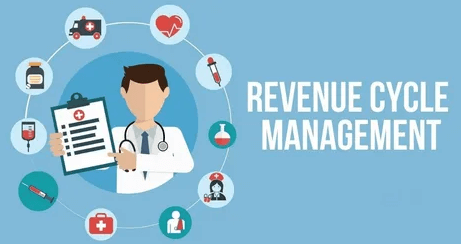What are the 3 types of medical billing systems?
Introduction
Medical billing systems are crucial in healthcare administration, ensuring efficient financial processes. Three primary medical billing systems exist paper-based, electronic, and hybrid. Paper-based systems involve physical documentation, making them time-consuming and error-prone. In contrast, electronic systems utilize software to streamline billing processes, enhancing accuracy and speed. Hybrid systems combine both approaches, allowing healthcare providers to transition gradually into fully electronic systems. Each Medical Billing System Type has advantages and disadvantages, impacting healthcare organizations’ revenue cycle management and overall operational efficiency.
This article delves into the three primary medical billing types: paper-based, electronic, and hybrid, detailing their advantages and disadvantages.
Paper-Based Medical Billing Systems
Paper-Based Medical Billing Systems rely on physical documentation for billing processes. In this traditional approach, healthcare providers generate paper claims, statements, and invoices to bill patients and insurance companies. While this system is simple and cost-efficient, it has notable drawbacks. Its manual nature makes it prone to human errors, leading to delays and claim rejections. Moreover, paper records lack accessibility, as they are not readily available remotely. Additionally, this method has an environmental impact due to the consumption of significant paper resources. In recent years, the healthcare industry has been shifting towards more efficient and accurate electronic billing systems, leaving behind many of the limitations of paper-based systems.
Advantages of Paper-Based Medical Billing Systems:
Simplicity and Familiarity:
- User-Friendly: Paper-based systems are generally straightforward and easy to understand. They don’t require extensive technical training, making them accessible to staff with varying levels of computer literacy.
- Familiarity: Many healthcare professionals are accustomed to traditional paper processes, and transitioning to electronic systems may be daunting. Paper billing maintains familiarity for such staff.
Low Initial Investment:
- Affordability: Implementing a paper-based billing system typically incurs lower upfront costs than electronic systems. Investing in specialized software, hardware, or IT infrastructure is unnecessary.
- No Software Expenses: The absence of billing software eliminates ongoing licensing and maintenance expenses.
Physical Records as Backups:
- Tangible Records: Paper records serve as tangible backups for important billing data. Technical issues: These hard copies can provide a safety net for data recovery.
- Continuity of Operations: Paper-based systems allow healthcare providers to continue their billing processes even during power outages or system failures.
Patient Preference:
- Personal Touch: Some patients appreciate receiving physical bills and statements, perceiving them as more personal and trustworthy than digital communication.
- Ease of Understanding: For certain patients, especially older adults, paper bills can be easier to understand and process than digital documents.
Security from Cyber Threats:
- Cybersecurity Immunity: Paper-based systems are immune to cybersecurity threats and data breaches, providing security and privacy that electronic systems may struggle to match.
Customization:
- Flexibility: Organizations using paper-based systems can design and format their billing documents precisely as they wish, tailoring them to meet specific branding or communication needs.
Transition Flexibility:
- Gradual Transition: Adopting a hybrid approach that combines paper and electronic elements can be a stepping stone for healthcare providers looking to shift to electronic systems. It allows organizations to incorporate electronic features while gradually retaining paper records.
Disadvantages of Paper-Based Medical Billing Systems:
Inefficiency:
- Manual Processes: Paper billing involves manual data entry and document handling, which are inherently time-consuming and prone to errors. These inefficiencies can lead to delayed claims and payment processing.
- Processing Delays: Paper documents must pass through multiple hands for verification and processing, resulting in slower billing cycles.
Error-Prone:
- Human Errors: Paper-based systems heavily rely on human input, making them susceptible to various errors, including typographical mistakes, incorrect coding, and data entry errors. These errors can result in claim rejections and payment denials.
- Risk of Misplacement: Paper records can be lost or misplaced, leading to missing billing information and potential revenue loss.
Limited Accessibility:
- Geographic Constraints: Access to paper records is confined to the physical location where they are stored, hindering remote access, which is increasingly vital in modern healthcare settings.
- Inconvenience: Retrieving paper records necessitates physical presence, causing inconvenience for staff requiring immediate access to billing information.
Environmental Impact:
- Resource Consumption: Paper-based systems consume significant resources, including paper, ink, and storage space. This consumption contributes to environmental issues like deforestation and waste.
- Lack of Sustainability: Paper-based systems are seen as environmentally unfriendly and outdated in a world emphasizing sustainability and digital transformation.
Higher Operational Costs:
- Storage Costs: Maintaining physical records necessitates dedicated storage facilities, which can incur ongoing expenses.
- Labor Costs: The manual nature of paper billing demands more personnel for data entry and record management, leading to increased labor costs.
Data Security Risks:
- Vulnerability to Physical Threats: Paper records are vulnerable to physical threats such as theft, fire, or natural disasters, putting patient and financial data at risk.
- Challenges in HIPAA Compliance: Ensuring compliance with data security regulations, such as HIPAA, can be more challenging with paper records than digital systems equipped with robust security measures.
Incompatibility with Modern Systems:
- Limited Interoperability: Paper records are incompatible with electronic health records (EHRs) and other modern healthcare systems, limiting interoperability and hindering comprehensive patient care.
Patient Experience:
- Inconvenience for Patients: Many patients prefer digital communication and online payment options, finding paper bills and statements less convenient and user-friendly.
Billing Complexity:
- Challenges in Complex Billing: In cases involving multiple insurers or complex billing scenarios, paper-based systems can become unwieldy and error-prone, leading to billing disputes.
Lack of Reporting and Analytics:
- Limited Data Analysis: Paper records do not facilitate real-time data analysis, reporting, or performance metrics tracking, hindering decision-making and process improvement efforts.
Electronic Medical Billing Systems
Electronic Medical Billing Systems streamline billing processes with specialized software, enabling healthcare providers to create, process, and submit medical claims electronically. These systems offer rapid claim submission, reduce billing cycle times, and improve accuracy. Accessible remotely, they minimize paperwork, lower error rates, and enhance overall financial management in healthcare organizations. Electronic systems are integral to modern healthcare’s efficiency and cost-effectiveness.
Advantages of Electronic Medical Billing Systems
Efficiency:
- Rapid Claim Submission: Electronic systems enable healthcare providers to submit claims quickly, reducing billing cycle times and accelerating revenue collection.
- Automation: Automating repetitive task processing minimizes manual labor, enhancing operational efficiency.
Accuracy:
- Error Reduction: Electronic systems significantly reduce errors associated with manual data entry, leading to higher claim acceptance rates and fewer claim rejections.
- Validation Checks: These systems incorporate checks to ensure that claims meet payer-specific requirements, reducing denials.
Accessibility and Remote Work:
- Remote Access: Billing data is easily accessible remotely, facilitating remote work arrangements and improving access to critical information.
- Multi-Location Coordination: Electronic systems allow multi-location healthcare facilities to coordinate billing seamlessly.
Cost Savings:
- Paper and Postage Savings: Reduced reliance on paper and postage cuts costs associated with printing and mailing paper claims and statements.
- Lower Labor Costs: Automation and efficiency lead to reduced labor costs related to billing processes.
Enhanced Data Security:
- Data Encryption: Electronic systems employ robust security measures, including data encryption, to protect patient and financial data from cyber threats.
- HIPAA Compliance: Compliance with data security regulations, such as HIPAA, is more achievable through electronic systems.
Integration with Other Systems:
- EHR Integration: Electronic billing systems can seamlessly integrate with Electronic Health Records (EHRs), promoting data consistency and comprehensive patient care.
- Reporting and Analytics: These systems enable real-time data analysis, reporting, and performance tracking, aiding in informed decision-making and process improvement.
Patient Convenience:
- Online Payments: Electronic billing systems allow patients to make payments online, offering convenience and reducing the reliance on manual payment processing.
Disadvantages of Electronic Medical Billing Systems
Initial Investment:
- High Upfront Costs: Implementing electronic billing systems requires an initial investment in software, hardware, and staff training, which can be substantial for smaller healthcare providers.
Technical Challenges:
- Learning Curve: Transitioning to electronic systems may involve a learning curve for staff, potentially affecting productivity during the transition period.
- System Downtime: Technical issues or system downtime can disrupt billing operations, causing delays and revenue loss.
Cybersecurity Risks:
- Data Breach Vulnerability: Electronic systems are susceptible to hacking and data breaches, necessitating robust security measures and constant vigilance.
Data Migration:
- Challenges in Data Migration: Transitioning from paper-based to electronic systems may involve complex data migration, posing potential risks to data integrity.
Dependency on Technology:
- Technical Dependencies: Electronic systems rely on technology and internet connectivity, making them vulnerable to outages, technical glitches, and hardware failures.
Regulatory Compliance:
- Complex Regulations: Adhering to evolving healthcare billing regulations and payer-specific requirements can be challenging and may require frequent software updates.
Staff Training and Turnover:
- Ongoing Training: Staff require ongoing training to stay updated with system changes and ensure accurate billing.
- Staff Turnover Impact: High staff turnover can disrupt billing processes if new employees need more proficiency in using electronic systems.
Hybrid Medical Billing Systems
Hybrid Medical Billing Systems blend elements of both paper-based and electronic systems. These adaptable solutions allow healthcare providers to gradually transition to fully electronic billing while retaining paper records as backups. Hybrid systems offer flexibility and customization, making them a transitional choice for organizations seeking to balance the benefits of modern electronic billing with the familiarity and security of paper records.
Advantages of Hybrid Medical Billing Systems:
Gradual Transition:
- Flexibility: Hybrid systems offer healthcare providers the flexibility to transition from traditional paper-based billing to electronic billing.
- Customized Approach: Organizations can tailor the pace of adoption according to their readiness and resources.
Risk Mitigation:
- Backup Options: Retaining paper records as backups in hybrid systems mitigates the risk of data loss due to technical issues or cyber threats. This enhances data security and compliance.
Legacy Systems Integration:
- Compatibility: Hybrid systems often integrate with legacy systems, including Electronic Health Records (EHR) and Practice Management Systems, ensuring a smooth transition without disrupting ongoing operations.
Cost Control:
- Budget-Friendly Transition: Healthcare providers can manage costs more effectively by minimizing the upfront investment in Healthcare Billing Software and staff training while gradually shifting toward electronic billing.
Disadvantages of Hybrid Medical Billing Systems:
Complexity:
- Operational Challenges: Managing two billing systems concurrently can be complex and require additional staff training and coordination efforts.
- Data Synchronization: Maintaining data consistency between paper and electronic systems can be challenging.
Resource Allocation:
- Resource-Intensive: Hybrid systems require healthcare organizations to allocate resources to paper-based and electronic billing components, which can strain budgets and personnel.
Limited Efficiency Gains:
- Incomplete Efficiency Benefits: Hybrid systems may need to realize the total efficiency gains associated with fully electronic billing, as manual processes persist alongside digital ones.
- Delayed ROI: The return on investment (ROI) from transitioning to electronic billing may be delayed due to the continued reliance on paper-based processes.
Data Duplication:
- Data Entry Duplication: Maintaining dual systems often involves double data entry, increasing the risk of errors and discrepancies.
- Resource-Intensive: The need to manage both electronic and paper records can be resource-intensive and time-consuming.
Compliance Challenges:
- Regulatory Compliance: Ensuring compliance with healthcare billing regulations and maintaining consistent billing practices across two systems can be challenging.
Limited Reporting and Analytics:
- Reduced Data Insights: Hybrid systems may provide limited data analytics and reporting capabilities compared to fully electronic systems, affecting decision-making and process improvement efforts.
Concluding Remarks
In conclusion, the landscape of healthcare revenue management is shaped by three distinct Medical Billing System Types: paper-based, electronic, and hybrid. Each type offers unique advantages and disadvantages, impacting healthcare organizations’ efficiency, accuracy, and overall operational performance. The choice among these Medical Billing Types hinges on technological readiness, budget constraints, and the desire for seamless integration with modern healthcare systems, ultimately shaping healthcare providers’ revenue cycle management strategies.











